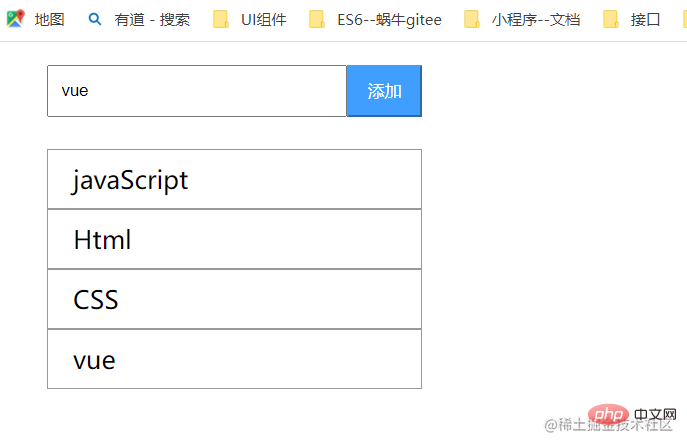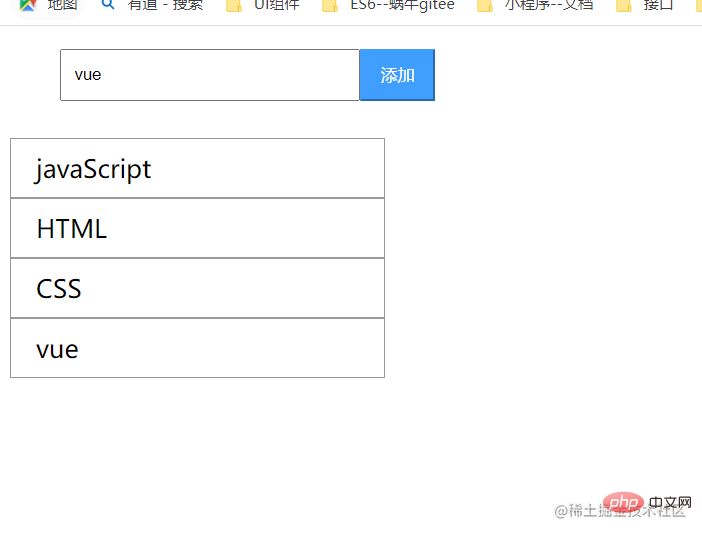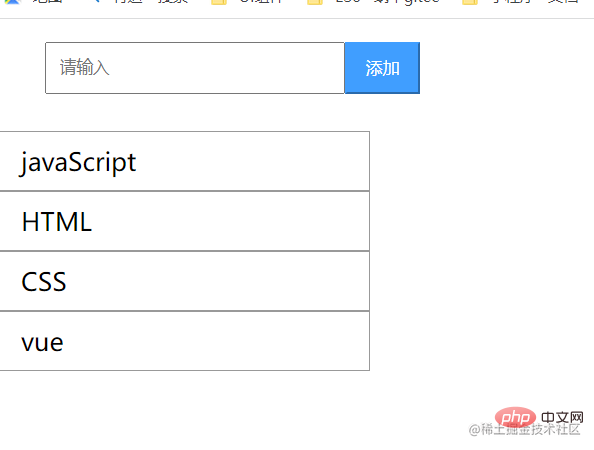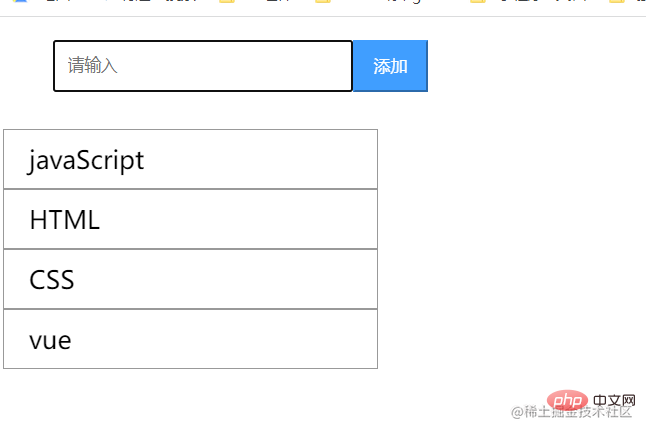 Web Front-end
Web Front-end
 Vue.js
Vue.js
 How to communicate between vue3 components? A brief analysis of communication methods
How to communicate between vue3 components? A brief analysis of communication methods
How to communicate between vue3 components? A brief analysis of communication methods
In the project we write vue3, we will all communicate with components. In addition to using the pinia public data source, what simpler API methods can we use? Next, I will introduce to you several ways of communicating between parent-child components and child-parent components.

1. Parent-child component communication
1.1 defineProps
The first thing we think of for parent-child component communication is props, We declare the accepted props in the child component, and then we pass in the corresponding key and value from the parent component. In this way, we can receive the properties and values passed by the parent component on the child component. [Related recommendations: vuejs video tutorial, web front-end development]
The specific implementation is as follows:
// children.vue
<template>
<ul class="list-group">
<li class="list-group-item" v-for="item in list" :key="index">
{{item}}
</li>
</ul>
</template>
<script setup>
import { defineProps } from 'vue';
const props = defineProps({
list :{
type: Array,
default: () => {}
}
})
</script>
As shown in the figure above, we have not only displayed the list array passed by the parent component on the child component, but also made it possible to add data to the list to update the child component data.
1.2 provide/inject
When we finish talking about props, the second thing we want to introduce is a combined option of vue3, provide and inject.
Projct is used to provide values that can be injected by descendant components, while inject is used to declare properties to be matched and injected into the current component by matching from the upper provider. The code is implemented as follows:
// parent.vue
<template>
<div class="parent-wrap">
<input type="text" v-model="value" class="form-control" placeholder="请输入">
<div class="input-group-append">
<button class="btn btn-primary" @click="handleAdd">添加</button>
</div>
</div>
<!-- child -->
<childrenVue :list="list"></childrenVue>
</template>
<script setup>
import { ref } from 'vue';
import childrenVue from './children.vue';
const value = ref('')
const list = ref(['javaScript', 'Html', 'CSS'])
const handleAdd = () =>{
list.value.push(value.value)
value = ''
}
</script>// children.vue
<template>
<ul class="list-group">
<li class="list-group-item" v-for="item in list" :key="item">{{item}}</li>
</ul>
</template>
<script setup>
import { inject } from 'vue';
const list = inject('list')
</script>
As shown in the figure above, we use the provide API to provide a key for the list , the value is list.value, and list,value is set to read-only attributes to prevent the child component from modifying the data source of the parent component. Then our injectAPI received list and implemented the communication between parent and child components.
2. Child-parent component communication
2.1 defineEmits
I have introduced two methods for parent to child to pass values above, but in our development, we will also encounter When the child passes a value to the parent component, how should we solve it? The first method is the defineEmits API in vue3. The code is implemented as follows:
// parent.vue
<template>
<div class="parent-wrap">
<input type="text" v-model="value" class="form-control" placeholder="请输入">
<div class="input-group-append">
<button class="btn btn-primary" @click="handleAdd">添加</button>
</div>
</div>
<!-- child -->
<childVue />
</template>
<script setup>
import childVue from "./child.vue";
const { ref, provide, readonly } = require("vue");
const value = ref('')
const list = ref(['javaScript', 'HTML', 'CSS'])
provide('list', readonly(list.value))
const handleAdd = () => {
list.value.push(value.value)
}
</script>// children.vue
<template>
<div class="parent-wrap">
<input type="text" v-model="value" class="form-control" placeholder="请输入" />
<div class="input-group-append">
<button class="btn btn-primary" @click="handleAdd">添加</button>
</div>
</div>
</template>
<script setup>
const { ref, defineEmits } = require("vue");
const value = ref('')
const emits = defineEmits(['add']) //父传子
// 给父组件传一个函数
const handleAdd = () => {
emits('add', value.value)
value.value= ''
}
</script>
As shown in the picture above, we are on the subcomponent emit sends an add event to the parent component to receive, and at the same time calls it on the parent component to execute the added logic, and then changes the value of input to empty, which is achieved. Parent component passes parameters to child component.
2.2 v-model:xxx emit
After introducing defineEmits, let’s introduce another v-model:xxx that has the same purpose but the same purpose. The emit method is implemented as follows:
// parent.vue
<template>
<childVue @add='handleAdd'/>
<ul class="list-group">
<li class="list-group-item" v-for="item in list" :key="item">{{item}}</li>
</ul>
</template>
<script setup>
import { ref } from '@vue/reactivity';
import childVue from './child.vue';
const list = ref(['javaScript', 'HTML', 'CSS'])
const handleAdd = (val) => {
list.value.push(val)
}
</script>// children.vue
<template>
<div class="parent-wrap">
<input type="text" v-model="value" class="form-control" placeholder="请输入" />
<div class="input-group-append">
<button class="btn btn-primary" @click="handleAdd">添加</button>
</div>
</div>
</template>
<script setup>
const { ref, defineProps, defineEmits } = require("vue");
const value = ref('')
const props = defineProps({
list: {
type: Array,
default: () => []
}
})
const emits = defineEmits(['list'])
// 给父组件一点东西
const handleAdd = () => {
// props.list.push(value.value) //不建议直接修改props的值 把握不住数据源的流转
const arr = props.list
arr.push(value.value)
emits('list', arr)
value.value= ''
}
</script>
After comparing it with the above defineEmits method, I believe everyone can see that these two What is the difference between them? Here we first pass the list of the parent component to the child component, then modify the data source of the parent component in the child component, and at the same time emit return it to the parent component, realizing the child component. The component passes values to the parent component.
(Learning video sharing: vuejs introductory tutorial, Basic programming video)
The above is the detailed content of How to communicate between vue3 components? A brief analysis of communication methods. For more information, please follow other related articles on the PHP Chinese website!

Hot AI Tools

Undresser.AI Undress
AI-powered app for creating realistic nude photos

AI Clothes Remover
Online AI tool for removing clothes from photos.

Undress AI Tool
Undress images for free

Clothoff.io
AI clothes remover

AI Hentai Generator
Generate AI Hentai for free.

Hot Article

Hot Tools

Notepad++7.3.1
Easy-to-use and free code editor

SublimeText3 Chinese version
Chinese version, very easy to use

Zend Studio 13.0.1
Powerful PHP integrated development environment

Dreamweaver CS6
Visual web development tools

SublimeText3 Mac version
God-level code editing software (SublimeText3)

Hot Topics
 1378
1378
 52
52
 How to add functions to buttons for vue
Apr 08, 2025 am 08:51 AM
How to add functions to buttons for vue
Apr 08, 2025 am 08:51 AM
You can add a function to the Vue button by binding the button in the HTML template to a method. Define the method and write function logic in the Vue instance.
 How to use bootstrap in vue
Apr 07, 2025 pm 11:33 PM
How to use bootstrap in vue
Apr 07, 2025 pm 11:33 PM
Using Bootstrap in Vue.js is divided into five steps: Install Bootstrap. Import Bootstrap in main.js. Use the Bootstrap component directly in the template. Optional: Custom style. Optional: Use plug-ins.
 How to reference js file with vue.js
Apr 07, 2025 pm 11:27 PM
How to reference js file with vue.js
Apr 07, 2025 pm 11:27 PM
There are three ways to refer to JS files in Vue.js: directly specify the path using the <script> tag;; dynamic import using the mounted() lifecycle hook; and importing through the Vuex state management library.
 How to use watch in vue
Apr 07, 2025 pm 11:36 PM
How to use watch in vue
Apr 07, 2025 pm 11:36 PM
The watch option in Vue.js allows developers to listen for changes in specific data. When the data changes, watch triggers a callback function to perform update views or other tasks. Its configuration options include immediate, which specifies whether to execute a callback immediately, and deep, which specifies whether to recursively listen to changes to objects or arrays.
 How to return to previous page by vue
Apr 07, 2025 pm 11:30 PM
How to return to previous page by vue
Apr 07, 2025 pm 11:30 PM
Vue.js has four methods to return to the previous page: $router.go(-1)$router.back() uses <router-link to="/" component window.history.back(), and the method selection depends on the scene.
 Vue realizes marquee/text scrolling effect
Apr 07, 2025 pm 10:51 PM
Vue realizes marquee/text scrolling effect
Apr 07, 2025 pm 10:51 PM
Implement marquee/text scrolling effects in Vue, using CSS animations or third-party libraries. This article introduces how to use CSS animation: create scroll text and wrap text with <div>. Define CSS animations and set overflow: hidden, width, and animation. Define keyframes, set transform: translateX() at the beginning and end of the animation. Adjust animation properties such as duration, scroll speed, and direction.
 How to use function intercept vue
Apr 08, 2025 am 06:51 AM
How to use function intercept vue
Apr 08, 2025 am 06:51 AM
Function interception in Vue is a technique used to limit the number of times a function is called within a specified time period and prevent performance problems. The implementation method is: import the lodash library: import { debounce } from 'lodash'; Use the debounce function to create an intercept function: const debouncedFunction = debounce(() => { / Logical / }, 500); Call the intercept function, and the control function is called at most once in 500 milliseconds.
 What does vue multi-page development mean?
Apr 07, 2025 pm 11:57 PM
What does vue multi-page development mean?
Apr 07, 2025 pm 11:57 PM
Vue multi-page development is a way to build applications using the Vue.js framework, where the application is divided into separate pages: Code Maintenance: Splitting the application into multiple pages can make the code easier to manage and maintain. Modularity: Each page can be used as a separate module for easy reuse and replacement. Simple routing: Navigation between pages can be managed through simple routing configuration. SEO Optimization: Each page has its own URL, which helps SEO.



